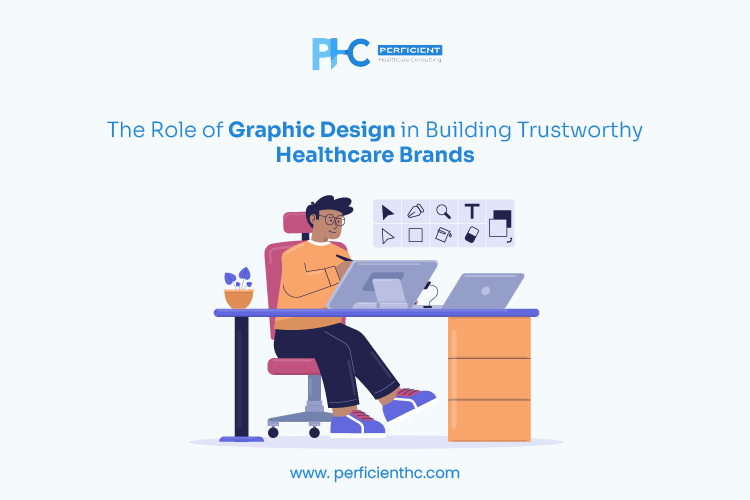In healthcare, trust is everything. Patients entrust providers with their health, personal information, and emotional well-being. While exceptional medical care forms the backbone of this trust, the visual identity of a healthcare brand often creates the very first impression. Graphic design plays a critical role in communicating reliability, compassion, and professionalism, long before a patient walks through the door or books an appointment online.
A strong visual identity does not simply make a brand look good, it tells a story, conveys values, and assures patients that they are in capable hands.
Why Design Matters in Healthcare Branding
The healthcare industry is deeply personal. Patients are not just customers—they are individuals seeking care, reassurance, and expertise. Because healthcare decisions are often sensitive and high stakes, every element of the brand presentation must be intentional. From the logo on a clinic’s signage to the layout of a patient portal, design directly influences perceptions of safety, accessibility, and trustworthiness.
Inconsistent or outdated design can unintentionally suggest disorganization or a lack of attention to detail, while clean and consistent visuals can make a provider appear more credible and reliable.
Key Elements of Trust-Building Design
- Consistency Across Every Touchpoint
Patients interact with healthcare brands in multiple ways—websites, mobile apps, waiting room materials, and social media. Consistency in color schemes, typography, and imagery across all these channels reinforces brand recognition and builds familiarity, which in turn fosters trust. - Color Psychology in Healthcare
Colors have powerful psychological effects. In healthcare branding, blues often suggest trust and stability, greens convey healing and growth, and soft neutrals or whites represent cleanliness and safety. Choosing the right palette can subtly influence patient confidence and comfort. - Clear and Patient-Friendly Layouts
Healthcare information can be complex. Effective design simplifies navigation so patients can quickly find appointment booking options, test results, and educational resources. A user-friendly interface reduces frustration and improves the overall patient experience. - Authentic Visual Storytelling
Patients connect more deeply with real, relatable imagery rather than generic stock photos. Featuring authentic photos of staff, community involvement, and patient success stories can make a healthcare brand feel more approachable and human. - Accessibility and Inclusivity in Design
Design must work for everyone. Accessible typography, high-contrast visuals, and mobile-friendly layouts ensure that patients with varying abilities and devices can engage fully with the brand. This demonstrates care, consideration, and inclusivity.
The Long-Term Impact of Strong Design
Investing in professional, thoughtful design pays off in multiple ways:
- Higher patient loyalty through emotional connection and brand recognition.
- Improved patient engagement by making information easy to access and understand.
- Competitive advantage in a crowded healthcare marketplace.
Over time, a well-designed healthcare brand becomes more than a visual identity, it becomes a symbol of trust and care in the minds of patients.
Conclusion
In a field where trust can determine whether a patient chooses your services, graphic design is not just decoration, it is a strategic tool. By combining consistent branding, intentional color choices, patient-centered layouts, authentic imagery, and inclusive design, healthcare providers can create an identity that communicates trustworthiness at every interaction.First impressions can define lasting relationships in healthcare. From your logo to your website and every visual in between, great design communicates trust, compassion, and professionalism. At Perficient Healthcare, we combine creativity with strategy to craft designs that not only stand out but also connect deeply with patients. Let us help you build a brand that inspires confidence, strengthens loyalty, and leaves a lasting impression.
Frequently Asked Questions
It shapes patient perceptions, builds trust, and improves overall brand credibility.
Blues, greens, and soft neutrals are often used to convey safety, trust, and healing.
Clear layouts, intuitive navigation, and easy-to-read content help patients access services without frustration.
No, branding includes all visual elements—colors, fonts, imagery, and layouts—that consistently represent your organization.
Yes, inclusive design ensures all patients can navigate and engage with your brand, regardless of abilities.

